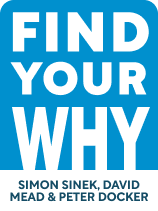

This article is an excerpt from the Shortform book guide to "Find Your Why" by Simon Sinek, David Mead, Peter Docker. Shortform has the world's best summaries and analyses of books you should be reading.
Like this article? Sign up for a free trial here .
What is Simon Sinek’s limbic brain argument? How can understanding your limbic brain bring you fulfillment?
In Find Your Why, author Simon Sinek explains the relationship between our limbic system and emotions. According to Sinek, the limbic brain is directly connected to your ability to make powerful connections with others and strong decision-making.
Keep reading to learn the importance of Sinek’s limbic brain in your daily life and how to use it most effectively.
Why Simon Sinek Says the Limbic Brain Matters
Purpose-driven people and organizations are more successful and fulfilled, and they contribute more to the world around them, according to Simon Sinek, best-selling author, coach, and popular TED Talk speaker. Find Your Why distills Sinek’s theory and his experience working with organizations and individuals into a workbook you can follow to discover your own purpose and strengths, or those of your organization.
Finding Your Why
Find Your Why builds on the theory Sinek laid out in his first bestseller, Start With Why: The most successful organizations have a clear purpose that keeps every action they take aligned with their core beliefs. Start With Why is itself part of the lineage of philosophy and psychology books that deal with purpose, like Viktor Frankl’s Man’s Search for Meaning, and of the newer lineage of books dealing with organizational culture and cultural change, like Malcolm Gladwell’s The Tipping Point.Sinek wrote this sequel to Start With Why to broaden his impact so that more organizations and individuals, even if they don’t have access to direct coaching from his company, can discover their Why. Find Your Why builds on its predecessor by laying out a step-by-step process for discovering your Why, for both organizations and individuals. Peter Docker and David Mead developed the steps to put Sinek’s theory into practice.
We’re Wired for Purpose: Simon Sinek’s Limbic Brain
Sinek argues that his model mimics how our brains work. He explains that What and How appeal to the neocortex. This outer part of the brain is well-equipped to process factual information, but not emotions, and it doesn’t hold a significant sway over your decisions. On the other hand, Why is meaningful and persuasive because it originates from—and appeals to—the limbic brain. This core part of your brain processes emotions and governs decision-making.
(Shortform note: Sinek’s biological justification for his framework has received some criticism: Neuroscience hasn’t produced clear evidence that one discrete part of the brain handles facts while another handles emotions.)
Our most powerful human connections come from the ability to communicate limbic brain to limbic brain. However, Sinek says communication doesn’t come naturally to this emotional core of your brain—you have to dig through the facts and data of the neocortex level to get to emotions that live in your limbic brain. Then, by putting your Why into words, you create a way for people to hear and connect with what’s in your limbic brain.
(Shortform note: Ancient rhetoricians identified pathos—the appeal to emotions—as the most persuasive type of rhetoric. As Jay Heinrichs notes in Thank You for Arguing, pathos gets your listener to agree with you and take an action you’re inviting them to.)
Exercise: What Would Having a Clear Purpose Do for You?
Consider how clarifying your purpose could improve your life.
- Do you feel fulfilled with the work you’re doing now? If you do, where does that sense of fulfillment come from? If not, how would your life be different if you were working at a fulfilling job?
- How would being more persuasive help you? For example, you might inspire your team or be more successful in job interviews.
- What kind of decisions would you make more confidently and why? For example, knowing your purpose might help you choose a new path for your career or choose between competing career opportunities.

———End of Preview———
Like what you just read? Read the rest of the world's best book summary and analysis of Simon Sinek, David Mead, Peter Docker's "Find Your Why" at Shortform .
Here's what you'll find in our full Find Your Why summary :
- Simon Sinek’s steps to understanding and living your purpose and your organization’s
- How to create and write your purpose statement
- What to do after you find your Why: Determine your How






